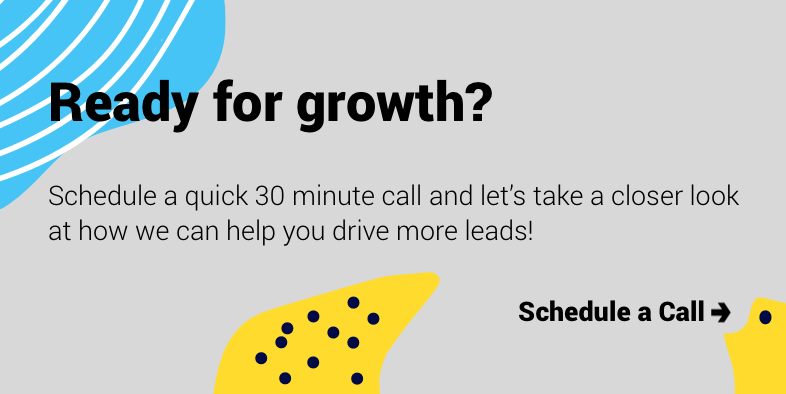As a young inbound marketing agency with big ambitions, we have always known we want to be at the forefront of all that is happening in the inbound marketing world. This is part of why we embarked on our SEO journey, to improve our agency and to add tremendous value to our clients.
SEO is often thought of as the red-haired stepchild of the family. When people think search engine optimisation, they assume that it’s difficult, complex, and time-consuming, but it doesn't have to be any of those things.
At Uku Inbound we’re always up for a challenge. We’ve embarked on our journey and now we would like to share with you the 10 things we learnt along the way:
1. We learnt that we should always keep the big picture in mind
Before we got into the nitty-gritty details of SEO, we realised that it would be a good idea to first take a 30,000-foot view from above to see what this whole thing was all about.
Simply defined, SEO is any series of deliberate tactics that are taken with the sole intention of increasing the ranking of a webpage or a website.
We learnt that even though there are many aspects of SEO, they could all be grouped under four broad areas, these are:
-
On-site optimisation: This involves changing the technical setup and structure of a website, carefully adding and adjusting keywords, phrases and copy so that a site may rank for relevant search terms.
-
Ongoing content marketing: An ongoing strategy to produce on-site content helps websites rank for more keywords, build domain authority and attract more inbound links.
-
Link building and off-site optimisation: These are strategies that happen away from the actual website, these include manually building links that point back to the site, developing reputation through guest blog posts and connecting with industry influencers through social media and other channels.
-
Metrics: Though these cannot be directly influenced, metrics need to be constantly measured and analysed to test the impact and success of SEO efforts and to point out which adjustments should be made next for even better results.
We learnt that there is no one set of activities that can be applied across all websites to get them to rank higher, rather that it is best to first understand SEO principles, analyse each website on a case-by-case basis and then determine how much effort must be applied to any of the four broad areas mentioned above to move the ranking needle.
If you would like to see how your SEO is doing, why not sign up for our FREE SEO Audit?
2. We learnt that page/domain authority and relevance are important to SEO
Though no one can say with absolute certainty how many factors are taken into consideration when it comes to getting a page to rank (rumour has it that it’s over 200) page/domain authority and relevance are considered in the top ten factors that Google looks at when it comes to ranking a website.
Page/Domain authority: Is a measure of how trustworthy a website/page is. Authority can be improved by gaining more inbound links from external sources. It’s calculated based on the quantity and quality of inbound links to a website.
Moz has a great plugin that helps you see page/domain authority from a quick glance at your Search Engine Results Page: MozBar
Page/Domain relevance: Relevance is determined by how appropriate a page is for a user’s search query. There are several factors that will determine which result is deemed most relevant to the user such as the user’s proximity should the search be location-based, the website’s domain authority and the user’s history with that search query. If you have clicked on a certain search result before, chances are that it will show up first.
3. We learnt about on-site optimisation
On-site optimisation is all the tactics which are implemented on a website that are geared toward making the website more visible and indexable by search engines.
These tactics range from activities such as optimising titles and including target keywords in meta descriptions to ensuring a site’s images are minimised, and that there is enough content on every single webpage.
There are a lot more on-site activities we learnt about and we also discovered this great infographic of what a perfectly optimised page should look like.
4. We learnt that building a robust content marketing strategy is a great SEO tactic
Although building a content marketing strategy is a separate activity and I’m sure it’s not the first thing that anyone would think of when it comes to SEO. We have learnt that a steady flow of content allows us to optimise, adjust and build upon the keywords we are targeting, thus we can build on our site’s authority and relevance.
The consistent flow of new weekly content on our blog serves the dual purpose of keeping our site fresh and our readers up to date on the latest happening in inbound marketing.
5. We learnt that getting backlinks is difficult but it is worth it
Backlinks are considered extremely important for SEO as they influence both the authority and the relevance of a website.
However, not all backlinks are equal though because the amount of link juice that is passed on to your site is determined by the domain authority on the site that is linking to yours.
Link building is the most difficult of all the SEO activities and for good reason, every backlink earned that points to your site is a nod that you are a thought leader on a topic and you know what you are talking about.
6. We learnt to write for both man and machine
A question that usually pops up in the digital arena is “Do we write for humans to read or do we write for search engines to rank our content?”
We have learnt that we must write for both!
We always write for humans first because ultimately they are the ones who read our content and take action on our words. But, we must never forget to focus on keyword placement, headers and titles, meta-descriptions and content length as these speak to the search engines that will help our content rank.
7. We learnt that technical SEO need not keep us up at night
The word “technical” is enough to intimidate anyone, but this doesn't have to be the case. Technical SEO refers to tactics that do not involve content and backlinking which help search engines crawl and index sites more effectively.
Even though our growing knowledge of HTML does come in handy from time to time, we have learnt that advances in the digital space have now made it possible to do most of technical SEO without having to write a line of code.
We discovered that the resources and information available on the web have become almost limitless, for example, we learnt how to fix our robots.txt file here, we occasionally check our site load speed here and we analyse our competitors’ SEO scores here...and one day we will complete the 300 hour coding course that can be found here!
8. We learnt that keyword research has evolved
Over time Google’s algorithm has changed, it now recognises user intent rather than just specific keywords. Although traditional keyword research may not hold as much weight as it once did, it is still an important part of SEO as it lets us target our key demographic based on their intentions.
When doing research, there are 3 types of keywords you should keep in mind:
Short-tail Keywords: These are keywords that are 3 words or less, such as “bottled water”.
Long-tail Keywords: These keywords comprise of over 3 words, such as “fresh mountain spring bottled water”.
LSI keywords: Latent Semantic Indexing keywords are phrases and words that are related to each other such as “drink”, “beverage” and “refreshment”.
9. We learnt that metrics are an integral part of SEO
We discovered that we wouldn’t get far in SEO unless we learned how to measure our results, interpret those results, and use them to make more meaningful changes to our approach.
Metrics are unfortunately an afterthought for most but we have learnt that it’s vital that measurement happens at regular intervals for three major reasons:
-
To enable us to test our progress.
-
To point out areas for improvement.
-
To continually highlight the value that is being added through the actions we are taking.
There are a good deal of metrics that can be measured in SEO, the important thing when making decisions on what to measure is understanding which metrics will help us reach our goals. These are the four categories we believe should always be included in all metrics:
-
Website and Page Rankings
-
Traffic
-
Engagements
-
Conversions
10. We learnt that SEO is a marathon rather than a sprint
SEO doesn’t happen in a vacuum. Everything we do will affect our competitors' rankings and everything that our competitors do will affect our rankings.
A great analogy to this would be to answer the question “How do you remove 500kg’s from a racecar so it can go faster?”. The answer is not to remove the engine in one single go but rather to slowly over time figure out what is not essential such as the radio and the bulky leather seats. Over time you’ll find that you have a lean mean racing machine. So it is with SEO, it’s not one big action but rather a thousand things done right over time.
The results of any campaign will not be seen in the first month, significant results are usually only noticeable after 3 to 6 months of continuous effort. That’s why it is important to build systems and methods that continually allow your rankings to improve.
If you are looking to improve your SEO rankings but are not sure where to start, why not schedule a short call with us? We would love to help!



